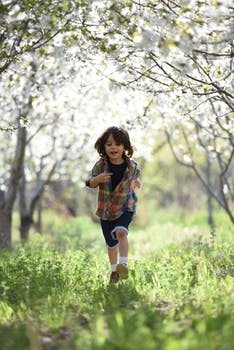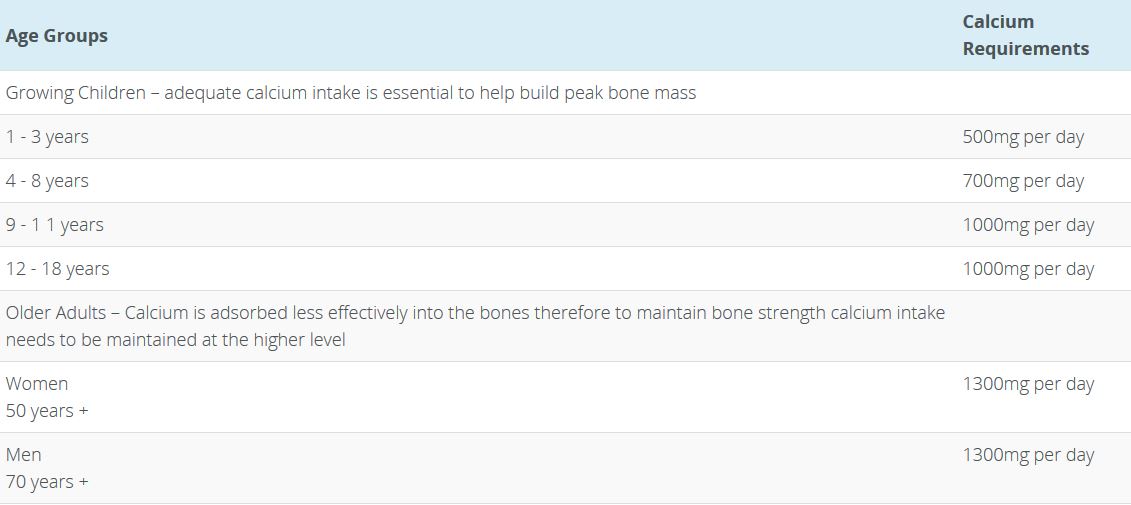Let’s not forget the bones of the problem: Osteoporosis is not just a disease of the frail older adult
October 22, 2018
The 20th of October was World Osteoporosis Day 2018. To celebrate this event the Institute for Physical Activity and Nutrition asked Dr Rachel Duckham, Lecturer of Growth, Development and Ageing, to prepare a blog.
Fast facts about osteoporosis
- Osteoporosis is a major public health concern. It is a common disease that occurs when bones become weak and at risk of fracture due to loss of important minerals, such as calcium.
- Osteoporosis affects both men and women: 1 in 3 men and 1 in 2 women over the age of 50 years are likely to experience a broken bone within their lifetime.
- In Australia, osteoporosis is estimated to affect at least 1.2 million people. However, the disease itself is under-diagnosed, as many people are diagnosed with osteoporosis only after they have had a bone fracture.
- What may be surprising is that osteoporosis is potentially a childhood disease that only presents itself later in life, so it is important to start engaging in healthy bone habits early in life.
- Lifestyle factors, such as regular weight bearing physical activity, and a diet rich in calcium, can help promote healthy bones and reduce the risk for osteoporosis.
What is osteoporosis?
Osteoporosis is a disease in which the human bone loses important minerals, such as calcium, causing the bone to become weak and likely to fracture. In Australia alone, it is estimated that 1.2 million people are affected by osteoporosis and an additional 6.3 million have weak bones (low bone density). This number is set to rapidly increase as the population ages.
Excessive weight and osteoporosis
In Australia, 28% of adults, and 1 in 4 Australian children, were overweight or obese in 2014-2015. As many people know, being overweight and obese is a major risk factor for poor heart health (cardiovascular diseases), and conditions such as type II diabetes. However, what many Australians may not realize is that carrying extra bodyweight may also be detrimental to bone health. New research world-wide shows that adults and children who are overweight or obese may result in weaker bones and increased risk of fracture. Although there still remains a lot to understand regarding this issue, it is important to maintain a healthy weight throughout life in order to protect our bones.
How can we prevent osteoporosis?
We often think that osteoporosis is an older person’s disease, and so prevention strategies are often targeted toward older frail women. What may surprise you however, is that this disease itself may begin during childhood, and only presents itself in older age. Therefore, targeting the childhood years may provide the groundwork for osteoporosis prevention, as these years are an important ‘window’ for developing peak bone mass.
How can we optimise peak bone mass?
One of the most important ways to reduce osteoporosis risk later in life is to optimise peak bone mass during childhood. Peak bone mass is the highest level of bone growth a person will have in their lifetime. We often reach our peak bone mass in our mid to late 20s, which can predict risk for fracture later in life. The adolescent years are particularly important because an estimated 90% of adult bone is accumulated by the end of adolescence in both girls and boys. Though genetic factors account for 60-80% of the amount of peak bone mass between individuals, lifestyle factors, including regular participation in bone specific physical activities and adequate nutrition, will help to maximise bone building and promote a higher peak bone mass. It is therefore critical that we promote smart bone health habits across the lifespan from childhood into older age.
What types of exercise will promote healthy bones across the lifespan?
One of the most effective ways to promote bone health throughout all age groups is participation in regular weight bearing physical activity and exercise. However, it is important to understand that the benefits of exercise on bone can be obtained at all ages, but they might have the greatest impact during childhood. For example, a child participating in weight bearing activities during the growing years will have the greatest capacity to maximise bone gains, whereas older adults who participate in similar activities after the age of 50 years will often experience bone maintenance rather than bone gain.
It is also important to remember that not all types of physical activity are equally effective for improving bone health. Our bones often respond best to activities that are dynamic, variable, and unique in terms of the magnitude and direction of weight (or load) that is placed on the skeleton (for example, exercise that incorporates multi-directional jumping, hopping and/or running). Our bones will also adapt positively to activities that produce a range of impact loads, such as soccer and tennis, and high joint reaction forces from vigorous muscle contractions, such as those often produced during progressive resistance training. One exercise that has been shown to be safe and effective in building bone across all age groups from childhood to older adults is daily hopping. Although non-impact exercise, such as swimming and cycling, are enjoyable to many and are beneficial for cardiovascular fitness and health, these forms of exercise unfortunately have little or no effect on strengthening our bones.

Challenges we face with the current generation of children and poor bone health
Even though it is well understood how important physical activity is to our health, globally, young people are now more sedentary (physically inactive) with 60% of their waking hours spent in sedentary behaviours, such as watching television and playing video games. Sedentary children are more likely to have low bone mass, reduced muscle size and strength, and poor physical function compared to children who are more physically active. In a recent study of Australian children, we observed what happens to bone mass and bone strength in children with life long sedentary behavior. We found that children with higher levels of sedentary behavior from 3 to 10 years had 9% lower bone strength when compared to their more active peers. This is important, as we know physical inactivity tracks over time with inactive children becoming inactive adults. As a result, this generation of children will likely have lower peak bone mass and therefore a potentially increased risk of osteoporosis by the time they reach adulthood.
It is important to consider ways in which we can modify the current lifestyles of our children to help reduce the risk of osteoporosis later in life. For example, incorporating at least 30 minutes of moderate to high impact bone loading activity 3 times per week, would have a valuable impact on skeletal health.
“So maybe if you want to start incorporating smart bone health habits in your family, from your child to your parents and grandparents, how about introducing a daily family hopping challenge?”
How can what you eat help bone health?
Along with regular weight bearing physical activity, a diet with sufficient calcium will help promote healthy bones. Calcium within our diet is an essential nutrient during childhood and adulthood to help build and maintain bone mass. Almost 90% of our body’s calcium is stored within our bones, and if we don’t get enough calcium from our diet, the body will begin to remove the mineral from our bones to help the heart, muscles, and other vital organs function. This will over time cause the body to withdraw more calcium than is absorbed, resulting in poor bone structure and strength and increased risk of fracture.
Calcium requirements
The advice from Osteoporosis Australia with regard to calcium requirements across all age groups indicates the following:

*** Table modified from Osteoporosis Australia – www.osteoporosisaustralia.org.au
How can you increase your calcium intake if you think it is not enough?
Can you increase the servings of dairy in your diet?
Dairy foods contain high levels of calcium. It is recommended to include 3 servings of dairy (milk, yoghurt, cheese) per day.

One serve of dairy equals:
- I cup (250ml) milk
- 2 slices (40g) cheese
- 1 tub (200g) yoghurt
What if you do not like dairy, can you eat other foods?
Canned salmon or sardines containing the bones are rich in calcium.
Don’t eat dairy or fish?
If you do not eat dairy or fish products, you can also take in calcium from other plant-based sources like calcium fortified soy, rice or other cereal drinks (look for at least 100mg calcium per 100ml), firm tofu, almonds, brazil nuts, and dark leafy greens such as broccoli, bok-choy, and kale.
What about Vitamin D?
Vitamin D also plays an essential role in bone health by helping to improve the absorption of calcium from the intestine. Adequate levels of Vitamin D are important in both children and adults as it helps both growth and maintenance of strong bones.
In Australia, the main source of Vitamin D is from exposure to sunshine. However, even though we often have more sunshine hours compared to other parts of the world, Vitamin D deficiency in Australia is common.
In people who have low Vitamin D levels a daily supplement may help although you should always check first with your doctor. As a general guideline however Osteoporosis Australia recommends the following to help promote bone health in people who obtain some sun and consume adequate levels of calcium:
- Children and adults under 70 years – 600 IU per day
- Adults over 70 years – at least 800 IU per day
For people who avoid the sun, are often covered, or have been diagnosed with Vitamin D deficiency it is recommended that higher doses may be required and consultation with your doctor would be advised.
Further information on bone health and osteoporosis
If you are interested in learning more about bone health across the lifespan you may wish to visit the following sites:
Dr Rachel Duckham
Lecturer of Growth, Development and Ageing, Institute for Physical Activity and Nutrition (IPAN), Deakin University
Re-published with permission from IPAN